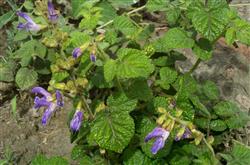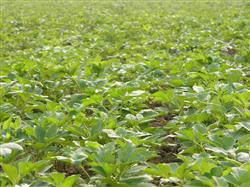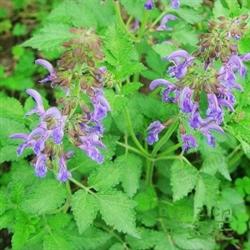How should purple salvia miltiorrhiza be planted?

How should purple salvia miltiorrhiza be planted? Please introduce that purple salvia miltiorrhiza can be planted as follows: 1. Land selection and soil preparation. The main results are as follows: (1) Seedling land, land with high topography and loose soil layer. Make a high bed and apply rotten barnyard manure or compost as base fertilizer. (2) the planting land should be planted on the land with deep soil layer, loose and fertile soil, high topography and good drainage. (3) in mountainous areas, choose sunny low slopes. 2. Raising seedlings. The border was made in late March with a width of 1.3 meters, a horizontal trench sowing according to the row spacing of 33 cm, a ditch depth of 1 cm, seeds mixed with fine sand into the ditch, covering the soil with no seeds, covering with plastic film after sowing, punching and releasing seedlings with plastic film after emergence, seedlings with a height of 6 cm and transplanting in late May. 3. Transplant. Spring planting in mid-May, autumn planting in late October, early transplanting, early rooting, early turning green the following year. The surface of the border is dug according to the row spacing of 33 × 23 cm, and the depth of the hole depends on the length of the root, and the base fertilizer is applied at the bottom of each hole to plant 1-2 seedlings (that is, seedlings). 4. Seed propagation and seedling co-breeding. Field management: 1. Ploughing, weeding and topdressing three times a year. 2. Except that the buds concentrate the root nutrients and leave the seed land, all the buds should be cut off. 3. Drainage and irrigation timely drainage in rainy season and timely ditch irrigation or watering in dry days. Pest control: 1. Dark brown spots appear in the disease part of leaf spot, and when the leaves die seriously, rotation is carried out. Spray 0.3% potassium dihydrogen phosphate or carbendazim, thiophanate, and zinc benzoate. 2. the branch root or whisker root of root rot turned brown and rotted, resulting in the death of the whole plant. It was irrigated with 50% carbendazim 800-1000 times solution and 50% methyl topiramate 1000 times solution. 3. Root-knot nematode disease due to the parasitism of root-knot nematodes, many nodules are produced in the roots, so that the plant develops slowly, and finally the whole plant dies, and the control rotates with cereal crops; 3% isosphos-methyl is applied. 4. The larvae of Spodoptera litura fed on the leaves of Salvia miltiorrhiza, and in serious cases, the leaves were eaten up to prevent and destroy the residual branches and leaves after harvest; spraying 10% permethrin 2000-3000 times, 40% omethoate 1000 times, and 90% trichlorfon 1000 times. Harvesting and processing: the asexual reproduction was harvested before germination in November of the current year or the spring of the second year, and the seeds can be dug from October to November of the second year to the early spring of the third year before germination. After digging out, the seeds can be exposed in the field, removed soil and transported back, and water washing is avoided. When drying to the fifth layer, tie it into small bundles, pile 2-3 angels to sweat, then spread out to dry, remove the hair and trim the rash, cut off the fine tail to become a commodity. Click to get more planting techniques of Salvia miltiorrhiza
- Prev

Which diseases and insect pests need to be controlled in planting Angelica dahurica?
Which diseases and insect pests need to be controlled in planting Angelica dahurica? Please introduce the control methods of angelica dahurica dahur The disease is caused by a half-known fungus in fungi and mainly harms leaves. The disease spot is dark green at the beginning.
- Next

How to manage planting traditional Chinese medicine Salvia miltiorrhiza?
How to manage planting traditional Chinese medicine Salvia miltiorrhiza? Please give some advice on the management of planting traditional Chinese medicine Salvia miltiorrhiza as follows: ① ploughing and weeding: generally ploughing and weeding three times, once when the seedlings are about 10 cm high in April, once before and after flowering in early June and once in late August. ② topdressing: growing...
Related
- Fuxing push coffee new agricultural production and marketing class: lack of small-scale processing plants
- Jujube rice field leisure farm deep ploughing Yilan for five years to create a space for organic food and play
- Nongyu Farm-A trial of organic papaya for brave women with advanced technology
- Four points for attention in the prevention and control of diseases and insect pests of edible fungi
- How to add nutrient solution to Edible Fungi
- Is there any good way to control edible fungus mites?
- Open Inoculation Technology of Edible Fungi
- Is there any clever way to use fertilizer for edible fungus in winter?
- What agents are used to kill the pathogens of edible fungi in the mushroom shed?
- Rapid drying of Edible Fungi

